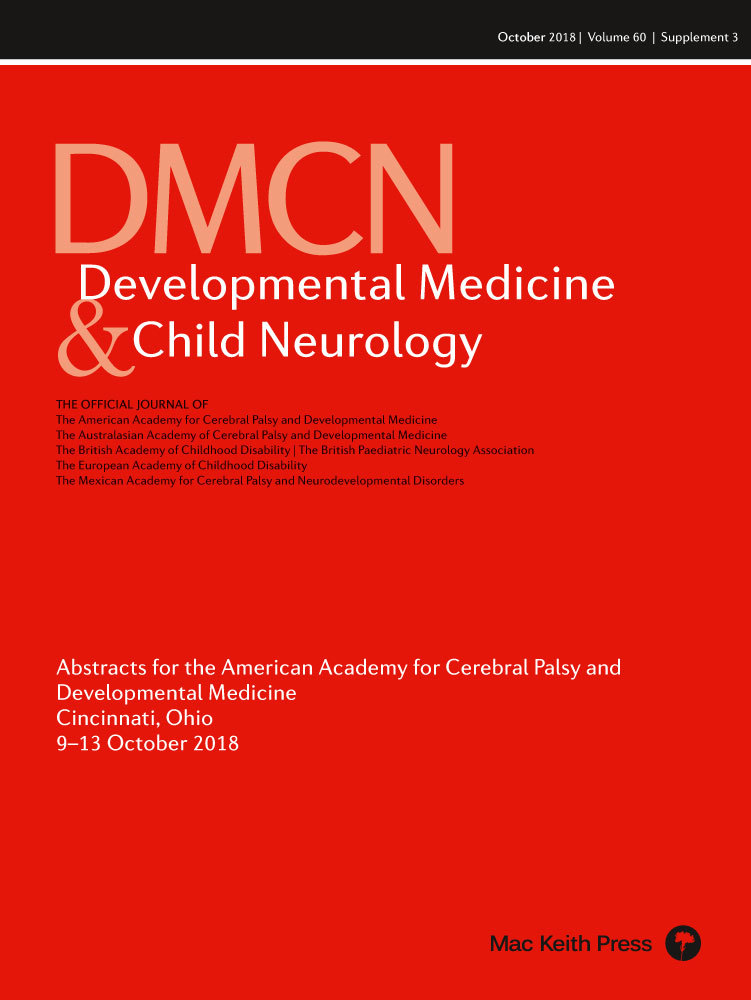A prospective, multicenter, observational study to evaluate the effectiveness and safety of abobotulinumtoxina in pediatric lower limb spasticity: injection practices
SP66
M Gormley1, D Inanoglu2, L Miller3, J Wilson4, M Delgado5, A Castagna6, J Zhu6, R Raymond7, G Suarez6
1Gillette Children's Specialty Healthcare; 2University of Texas Southwestern Medical Center and Children's Health System of Texas; 3University of Tennessee College of Medicine and Children's Hospital at Erlanger; 4Oregon Health & Science University and Shriner's Hospital for Children; 5Texas Scottish Rite Hospital for Children, University of Texas Southwestern Medical Center; 6Ipsen Biopharmaceuticals; 7Ivadata
Background and Objective(s): The efficacy and safety of a single injection of abobotulinumtoxinA (aboBoNT-A, Dysport®) in children aged ≥2 years with lower limb spasticity has been established (Delgado et al, 2016). Here we report cycle 1 muscle injection practices for the first 102 enrolled and treated patients in an ongoing phase 4, prospective, multicenter study (NCT03017729). This observational study will follow participants for a period of 18 months (maximum 6 injection cycles) and is focused on evaluating the longitudinal attainment of patient-centered and function-related goals with aboBoNT-A in a clinical setting. The current study is ongoing (data cleaning ongoing) and results are subject to change in the future as more subjects become enrolled.
Study Design: Ongoing phase 4, prospective observational study.
Study Participants & Setting: Expected enrollment is 210 patients aged 2–17 years with lower limb spasticity treated in routine clinical practice in the USA. Eligible patients can be new to BoNT-A treatment or previously treated with a minimum interval of 12 weeks since the last injection. The decision to use aboBoNT-A must be made prior to, and independently from, the decision to enter a patient in the study.
Materials/Methods: Patients are treated as per routine clinical practice (injection technique, dosing and intervals). The dose of aboBoNT-A should not exceed 15 U/kg if one leg is injected, or 30 U/kg if both legs are injected, or a maximum dose of 1000 U, whichever is lower. The primary endpoint of the study is the mean Goal Attainment Scale T (GAS-T) score. Here, we describe assessments of aboBoNT-A injection practices for the first injection cycle only.
Results: A total of 102 patients (38 female; 64 male) aged 2.1–16.7 years have been enrolled and treated as of January 2018. Injection guidance technique was recorded for 65 patients (64%): electrostimulation, n=43 (66.2%); electromyography, n=17 (26.2%); and ultrasound, n=7 (10.8%). In total, 78 patients (76.5%) were injected in the gastrocnemius (GC) and 49 patients (48.0%) in the soleus (S). Non-gastrocnemius-soleus complex muscles injected were: hamstrings, n=53 (52.0%); adductors, n=21 (20.6%); tibialis posterior, n=9 (8.8%); rectus femoris, n=3 (2.9%); gracilis, n=2 (2.0%); hallux flexors, n=1 (1.0%); toe flexors, n=1 (1.0%); and others, n=9 (8.8%).
Conclusions/Significance: This is the first observational study of an FDA-approved botulinum toxin for pediatric lower limb spasticity. First analysis of information from currently enrolled subjects provides an initial assessment of injection practices in a pediatric spasticity population presenting for treatment.




